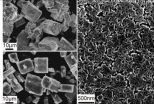(Press-News.org) AUSTIN, Texas — Rats that are socially isolated during a critical period of adolescence are more vulnerable to addiction to amphetamine and alcohol, found researchers at The University of Texas at Austin. Amphetamine addiction is also harder to extinguish in the socially isolated rats.
These effects, which are described this week in the journal Neuron, persist even after the rats are reintroduced into the community of other rats.
"Basically the animals become more manipulatable," said Hitoshi Morikawa, associate professor of neurobiology in the College of Natural Sciences. "They're more sensitive to reward, and once conditioned the conditioning takes longer to extinguish. We've been able to observe this at both the behavioral and neuronal level."
Morikawa said the negative effects of social isolation during adolescence have been well documented when it comes to traits such as anxiety, aggression, cognitive rigidity and spatial learning. What wasn't clear until now is how social isolation affects the specific kind of behavior and brain activity that has to do with addiction.
"Isolated animals have a more aggressive profile," said Leslie Whitaker, a former doctoral student in Morikawa's lab and now a researcher at the National Institute on Drug Abuse. "They are more anxious. Put them in an open field and they freeze more. We also know that those areas of the brain that are more involved in conscious memory are impaired. But the kind of memory involved in addiction isn't conscious memory. It's an unconscious preference for the place in which you got the reward. You keep coming back to it without even knowing why. That kind of memory is enhanced by the isolation."
The rats in the study were isolated from their peers for about a month from 21 days of age. That period is comparable with early-to-middle adolescence in humans. They were then tested to see how they responded to different levels of exposure to amphetamine and alcohol.
The results were striking, said Mickaël Degoulet, a postdoctoral researcher in Morikawa's lab. The isolated rats were much quicker to form a preference for the small, distinctive box in which they received amphetamine or alcohol than were the never-isolated control group. Nearly all the isolated rats showed a preference after just one exposure to either drug. The control rats only became conditioned after repeated exposures.
Morikawa said that this kind of preference for the environmental context in which the reward was received provides researchers with a more useful way of understanding addiction than seeing it as a desire for more of the addictive substance.
"When you drink or take addictive drugs, that triggers the release of dopamine," he said. "People commonly think of dopamine as a happy transmitter or a pleasure transmitter, which may or may not be true, but it is becoming increasingly clear that it is also a learning transmitter. It strengthens those synapses that are active when dopamine is released. It tells our brain that what we're doing at that moment is rewarding and thus worth repeating."
In an important sense, says Morikawa, you don't become addicted to the experience of pleasure or relief but to the constellation of environmental, behavioral and physiological cues that are reinforced when the substance triggers the release of dopamine in the brain.
Morikawa and Whitaker have also been able to document these changes at the neuronal level. Social isolation primes dopamine neurons in the rats' brain to quickly learn to generate spikes in response to inputs from other brain areas. So dopamine neurons will learn to respond to the context more quickly.
If the control, group-housed rats are given enough repeated exposure to amphetamine, they eventually achieve the same degree of addiction as the socially isolated rats. Even from this point of comparable addiction, however, there are differences. It takes longer for the socially isolated rats to kick the addiction to amphetamine when they're exposed to the same extinction protocols. (They spend time in the same environments, but amphetamine is no longer available.)
"So the social isolation leads to addiction more quickly, and it's harder to extinguish," said Whitaker.
Whitaker said that the implications of these findings for addiction in humans are obvious. There is a rich literature that documents the negative effects of social isolation in humans, as well as a great deal of evidence that addiction in rats and humans is functionally similar at the neurological level.
"It's not a one-to-one correlation, but there are socially impoverished human environments," she said. "There are children who are neglected, who have less social input. It's reasonable to make guesses about what the impact of that is going to be."
Morikawa points out that their findings may also have implications for how social isolation during adolescence affects conditionability when it comes to other kinds of rewards.
"We think that maybe what's happening is that the brain reacts to the impoverished environment, to a lack of opportunities to be reinforced by rewarding stimuli, by increasing its sensitivity to reward-based conditioning," said Morikawa. "The deprived brain may be overinterpreting any reward it encounters. And if that's the case, it's likely that you are more conditionable not only to drugs but to any sort of reward, including food reward. One interesting possibility is that it might also make adolescents more prone to food 'addiction,' and then to obesity."
INFORMATION:
Socially isolated rats are more vulnerable to addiction, report researchers
The effects of social isolation persist even after the rats are reintroduced into the community of other rats
2013-01-24
ELSE PRESS RELEASES FROM THIS DATE:
Controlled crumpling of graphene forms artificial muscle
2013-01-24
DURHAM, N.C. -- Duke University engineers are layering atom-thick lattices of carbon with polymers to create unique materials with a broad range of applications, including artificial muscles.
The lattice, known as graphene, is made of pure carbon and appears under magnification like chicken wire. Because of its unique optical, electrical and mechanical properties, graphene is used in electronics, energy storage, composite materials and biomedicine.
However, graphene is extremely difficult to handle in that it easily "crumples." Unfortunately, scientists have been ...
Motion control keeps electric car's 4 wheels -- and 4 motors -- on the road
2013-01-24
COLUMBUS, Ohio—It weighs half as much as a sports car, and turns on a dime—so its no surprise that the electric car being developed at Ohio State University needs an exceptional traction and motion control system to keep it on the road.
With four wheels that turn independently, each with its own built-in electric motor and set of batteries, the experimental car is the only one of its kind outside of commercial carmakers' laboratories.
"It is considered one of the promising future vehicle architectures," said Junmin Wang, assistant professor of mechanical engineering ...
Children's complex thinking skills begin forming before they go to school
2013-01-24
New research at the University of Chicago and the University of North Carolina at Chapel Hill shows that children begin to show signs of higher-level thinking skills as young as age 4 ½. Researchers have previously attributed higher-order thinking development to knowledge acquisition and better schooling, but the new longitudinal study shows that other skills, not always connected with knowledge, play a role in the ability of children to reason analytically.
The findings, reported in January in the journal Psychological Science, show for the first time that children's ...
SNPs associated with breast cancer risk alter binding affinity for pioneer factor FOXA1
2013-01-24
(Lebanon, NH)— Dartmouth scientists showed that more than half of all the SNPs associated with breast cancer risk are located in distant regions and bound by FOXA1, a protein required for estrogen receptor-α (ER) function according to a paper published in the journal Nature Genetics in November.
Jason Moore, PhD, a Third Century Professor of genetics, director of the Institute for Quantitative Biomedical Sciences, and associate director for bioinformatics at Dartmouth-Hitchcock Norris Cotton Cancer Center, and other researchers used a new methodology that combines ...
Tall and thin not so great for lung disease
2013-01-24
Tall, thin women face a greater risk of infection with nontuberculous mycobacteria (NTM), cousins of the organism that causes tuberculosis, according to researchers at National Jewish Health. Women with NTM infections also showed a weakened immune response associated with their fat cells, in a paper published in the Jan. 15, 2013, issue of The American Journal of Respiratory and Critical Care.
"Nontuberculous mycobacteria are widespread in the environment, yet only some people develop infections," said Edward Chan, MD, senior author and professor of medicine at National ...
Modifications of a nanoparticle can change chemical interactions with cell membranes
2013-01-24
Researchers at Syracuse University's Department of Biomedical and Chemical Engineering at L.C. Smith College of Engineering and Computer Science are studying the toxicity of commonly used nanoparticles, particles up to one million times smaller than a millimeter that could potentially penetrate and damage cell membranes.
In a recent article published along with cover art in the leading journal Langmuir entitled "Effects of nanoparticle charge and shape anisotropy on translocation through cell membranes," researchers Shikha Nangia, assistant professor of biomedical and ...
Planning for bacteria in cancer patients may help hospitals fight infections
2013-01-24
What cancerous conditions lead to what kinds of bacterial infections? If doctors knew, they could predict which patients would likely benefit from pre-treatment with certain kinds of antibiotics. A University of Colorado Cancer Center study published in this month's issue of the International Journal of Infectious Diseases shows the answer: E. coli and Klebsiella pneumoniae are especially prevalent in patients with lung and GI cancers, more so for Klebsiella if these patients have been treated previously with aminopenicillins.
"These are really dangerous infections. You ...
'Invisible' Filipino history in Annapolis documented by UMD researchers
2013-01-24
COLLEGE PARK, Md. – Filipinos have been an invisible minority in Annapolis, Maryland for more than a century. Now, researchers at the University of Maryland are using oral histories as a way to flesh out their life and times – documenting the incredible challenges they faced – and successes they celebrated.
After the Spanish-American War, the Philippines became a U.S. territory. Filipinos were brought to Annapolis – home of the Naval Academy – to serve as desk interns, fire fighters, construction laborers, messmen and stewards. In many cases, the Naval Academy replaced ...
NASA catches the very brief life of Tropical Cyclone Peta
2013-01-24
VIDEO:
This is a NASA TRMM satellite flyby of Tropical Cyclone Peta in the South Indian Ocean. TRMM revealed that rain was falling at a rate of up to 94 mm...
Click here for more information.
Infrared data from NASA's Aqua satellite has shown that soon after a low pressure system in northwestern West Australia became Tropical Storm Peta, it made landfall and started to fall apart.
Early on Jan. 22, the Joint Typhoon Warning Center (JTWC) gave System 93S a high chance for ...
ORNL research paves way for larger, safer lithium ion batteries
2013-01-24
OAK RIDGE, Tenn., Jan. 23, 2013 -- Looking toward improved batteries for charging electric cars and storing energy from renewable but intermittent solar and wind, scientists at Oak Ridge National Laboratory have developed the first high-performance, nanostructured solid electrolyte for more energy-dense lithium ion batteries.
Today's lithium-ion batteries rely on a liquid electrolyte, the material that conducts ions between the negatively charged anode and positive cathode. But liquid electrolytes often entail safety issues because of their flammability, especially as ...
LAST 30 PRESS RELEASES:
Tracing the quick synthesis of an industrially important catalyst
New software sheds light on cancer’s hidden genetic networks
UT Health San Antonio awarded $3 million in CPRIT grants to bolster cancer research and prevention efforts in South Texas
Third symposium spotlights global challenge of new contaminants in China’s fight against pollution
From straw to soil harmony: International team reveals how biochar supercharges carbon-smart farming
Myeloma: How AI is redrawing the map of cancer care
Manhattan E. Charurat, Ph.D., MHS invested as the Homer and Martha Gudelsky Distinguished Professor in Medicine at the University of Maryland School of Medicine
Insilico Medicine’s Pharma.AI Q4 Winter Launch Recap: Revolutionizing drug discovery with cutting-edge AI innovations, accelerating the path to pharmaceutical superintelligence
Nanoplastics have diet-dependent impacts on digestive system health
Brain neuron death occurs throughout life and increases with age, a natural human protein drug may halt neuron death in Alzheimer’s disease
SPIE and CLP announce the recipients of the 2025 Advanced Photonics Young Innovator Award
Lessons from the Caldor Fire’s Christmas Valley ‘Miracle’
Ant societies rose by trading individual protection for collective power
Research reveals how ancient viral DNA shapes early embryonic development
A molecular gatekeeper that controls protein synthesis
New ‘cloaking device’ concept to shield sensitive tech from magnetic fields
Researchers show impact of mountain building and climate change on alpine biodiversity
Study models the transition from Neanderthals to modern humans in Europe
University of Phoenix College of Doctoral Studies releases white paper on AI-driven skilling to reduce burnout and restore worker autonomy
AIs fail at the game of visual “telephone”
The levers for a sustainable food system
Potential changes in US homelessness by ending federal support for housing first programs
Vulnerability of large language models to prompt injection when providing medical advice
Researchers develop new system for high-energy-density, long-life, multi-electron transfer bromine-based flow batteries
Ending federal support for housing first programs could increase U.S. homelessness by 5% in one year, new JAMA study finds
New research uncovers molecular ‘safety switch’ shielding cancers from immune attack
Bacteria resisting viral infection can still sink carbon to ocean floor
Younger biological age may increase depression risk in older women during COVID-19
Bharat Innovates 2026 National Basecamp Showcases India’s Most Promising Deep-Tech Ventures
Here’s what determines whether your income level rises or falls
[Press-News.org] Socially isolated rats are more vulnerable to addiction, report researchersThe effects of social isolation persist even after the rats are reintroduced into the community of other rats





